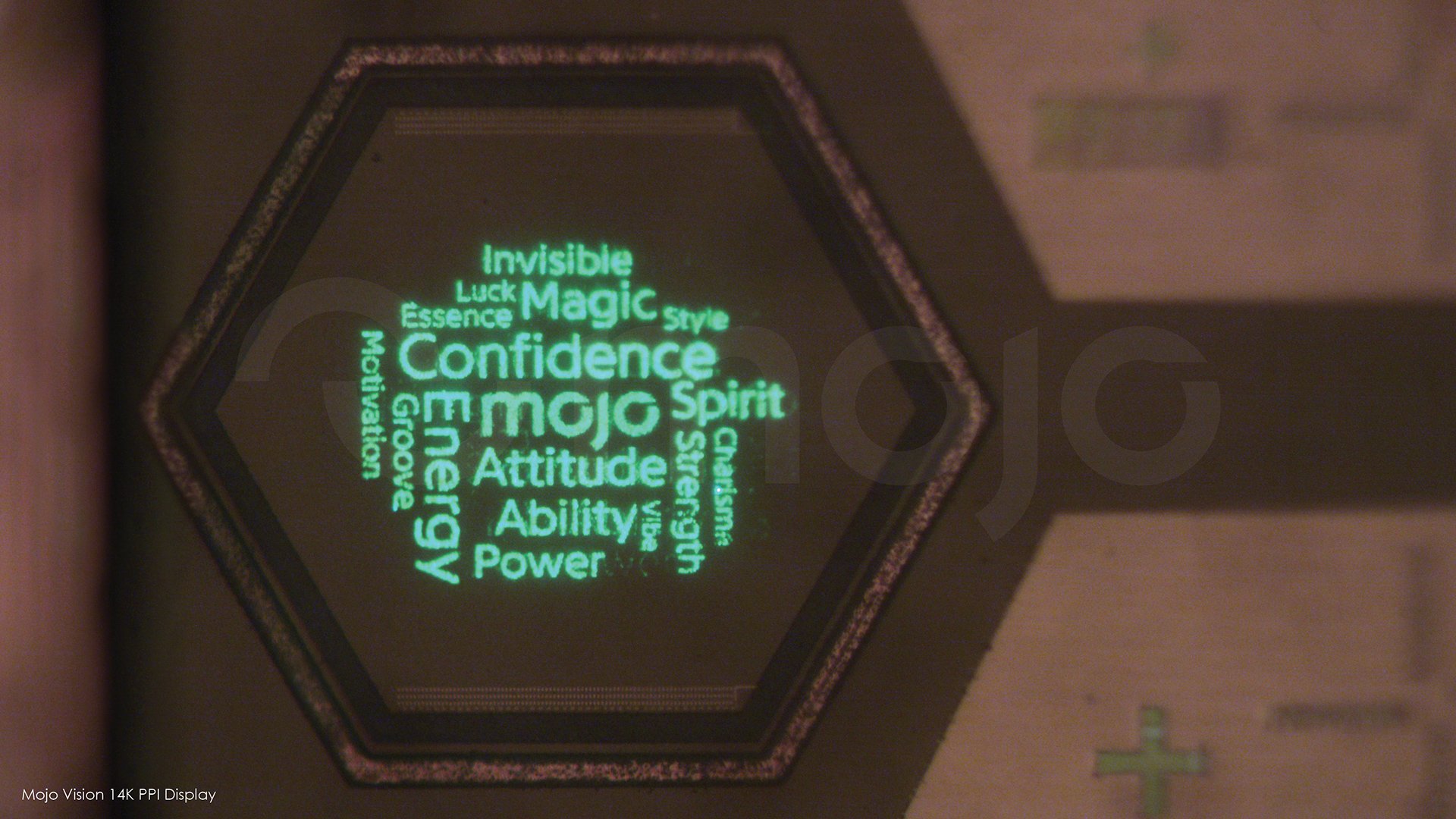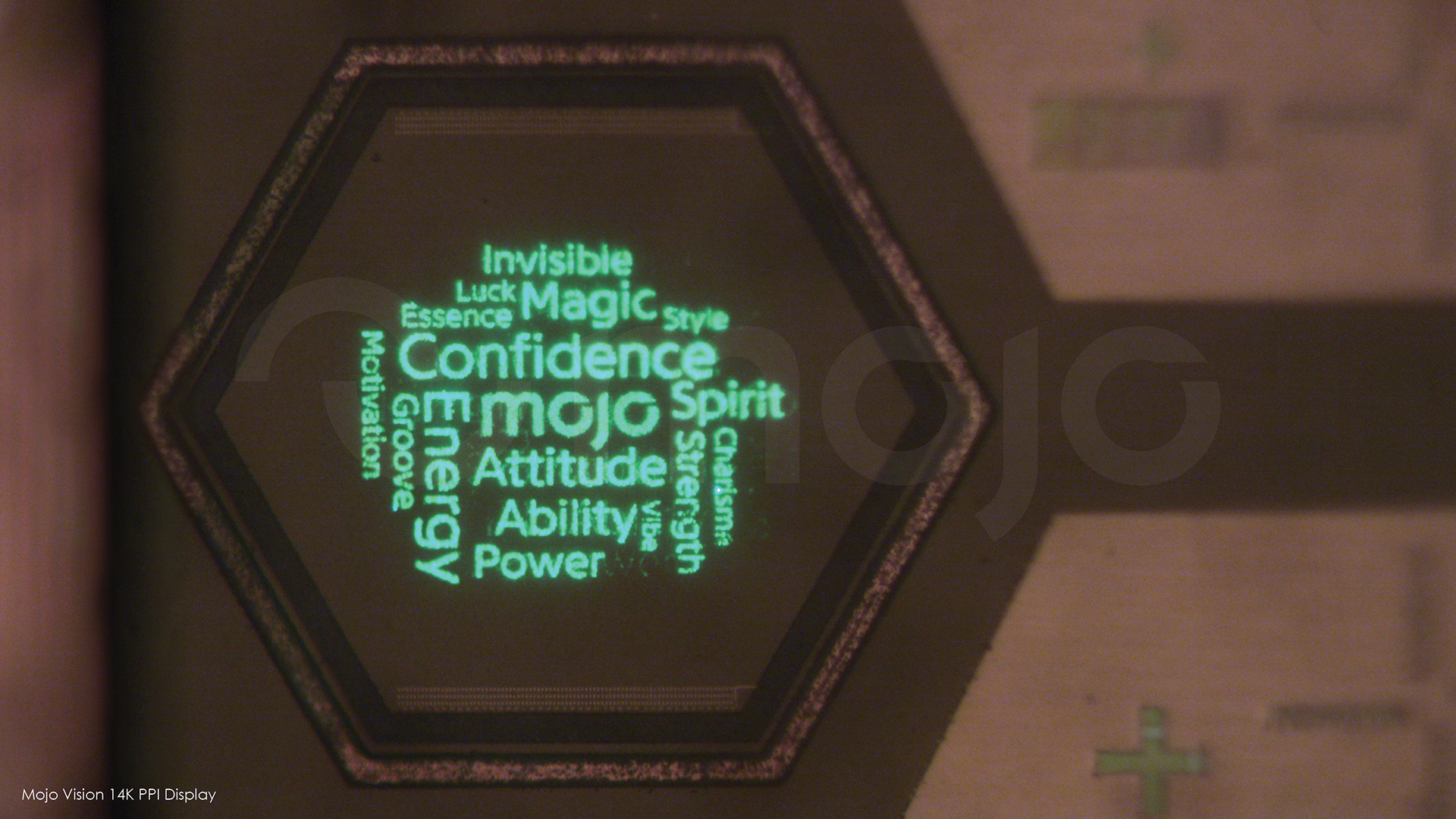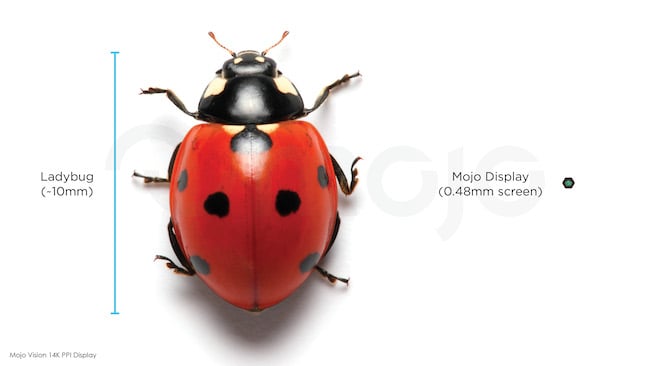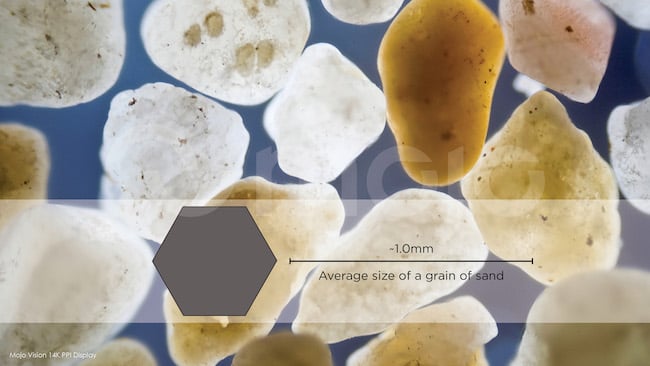

MicroLEDs are the revolutionary new display technology that will form the future for all types of gadgetry that requires a screen.
Having to wear some form of smart goggles or cumbersome head-mounted display to interface with the digital world has proved to be a headache for visionaries wanting us to seamlessly blend with artificial reality. Lighter-weight materials - the inevitable consequence of technological advance - or mini-projectors beaming graphical information into our eyes hold out possible solutions. But a new microdisplay smaller than a pinhead, smaller even than a grain of sand, may be the best bet yet.
Mojo Vision, based in Saratoga, California, has made a microscopically small display with the densest pixel pitch ever for moving content. At just 480μm (or 0.48mm) across, the display contains 14,000 pixels per inch or 300 times greater than current smartphone displays. Each pixel is 1.3 micrometres across which means that the gap between them is only 0.5µm.
It’s built with MicroLEDs, a technology expected to play a critical role in the future development of next-generation wearables, AR/VR hardware and heads-up displays.
It’s also critical to Mojo Vision’s development of an AR platform that it calls ‘invisible computing’ - a nearly invisible low-power display without the distraction of today’s mobile devices.

The company says it is exploring new ways for people to receive and share information that is immediate and relevant but doesn’t distract their attention from the world in front of them. The aim is to unplug the physical device so that we are more engaged with what’s going on around us whilst at the same time being mainlined online.
“Mojo Vision’s record-setting display is our first important step in reimagining how we access, view and share information beyond current mobile platforms,” explained the firm’s chief technology officer, Mike Wiemer. “Today’s devices are tethered to us and often create a barrier to personal interactions. Now is the time for us to rethink the delivery of that information so that it is less intrusive.”
We should add that this is a prototype but Mojo Vision is intent on building a product around it. Some have speculated this could be in the form of a contact lens. The display would hardly register in the viewer’s vision unless switched on, in which case it could be fed data, alerts or other information.
The firm is hiring for a user experience/AR designer, senior software engineers and a product manager and is reportedly working on even smaller pixels.

MicroLEDs are based on gallium nitride (GaN) LED technology which offers far higher total brightness than OLED produces – as much as 30 times, as well as higher efficiency in terms of lux/W - approximately 10% of the power of current LCD displays.
Amazingly, it is the same technology behind Samsung’s massive direct-view cinema screens. The largest one of those in the world was recently installed in a Malaysia multiplex measuring 45.93-feet wide and 16.4-feet high.
Samsung has also backed the tech over OLED for its future TV screens, unleashing a 75-inch, 146-inch and 219-inch version to fit a living room wall. The 146-inch Wall has a pixel size under 1mm; the 75-inch one is 0.15mm. Being modular, MicroLEDS have the added advantage of being able to be packed up small and fitted to any size in the home (as outlined here).
The difficulty lies in manufacturing MicroLEDs. A standard 55-inch panel, for example, requires millions of MicroLEDs. Any imperfection could create uneven colours and lighting.
Manufacturers will undoubtedly crack the problem of mass-production but making smaller screens (with fewer pixels, albeit at an infinitesimal pixel pitch) seems possible in a shorter timeframe.
That’s why Apple is reportedly using MicroLEDs for future versions of the Apple Watch. Google is also experimenting, possibly for a new version of its AR glasses, and a recent prototype of a 1.6-inch smartwatch display from US-based developer Glo emitted light at 4,000 nits while consuming less than 1 Watt. An equivalent LCD display would burn out in seconds trying to meet half that brightness.
MicroLEDs are therefore a great bet for smartphones — viewable in daylight and longer time between charges – and also as a key component for future VR devices and head mount displays, an ‘invisible’ computer that is always with you but never obtrusively.
Tags: VR & AR


Comments